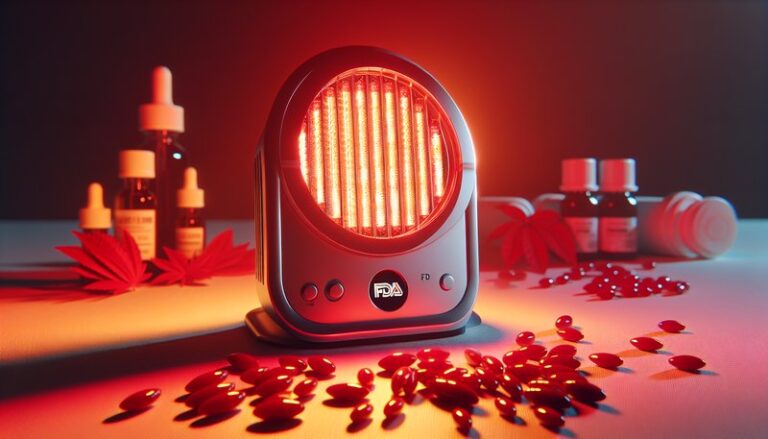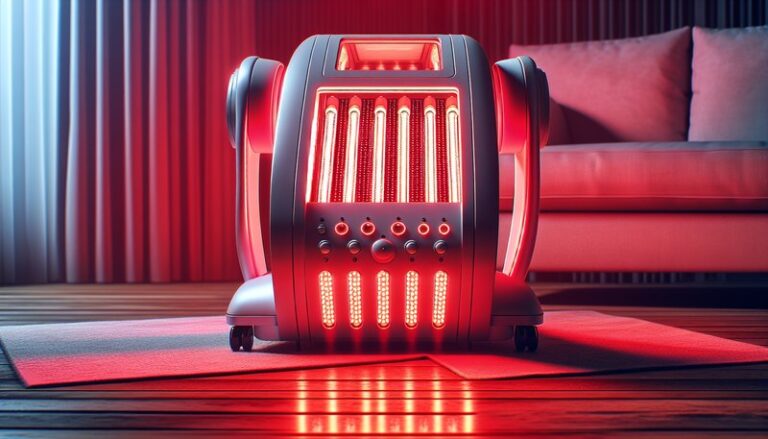How Long To Do Red Light Therapy?
Have you ever wondered how long it takes to reap the benefits of red light therapy?
This article will explore the duration and frequency of red light therapy sessions, the science behind its effectiveness, and considerations worth noting before starting treatment. Whether you’re seeking relief from pain, improved skin health, or enhanced recovery, this guide will provide clear insights.
Key Takeaways
- Red light therapy sessions typically last between 10 to 30 minutes, depending on various factors.
- Frequency of use can vary, with recommendations ranging from 2 to 5 times per week.
- Understanding personal goals and skin sensitivity is crucial when determining the ideal treatment plan.
What is Red Light Therapy?
Red light therapy (RLT) is a non-invasive treatment that involves exposure to low levels of red or near-infrared light. This therapy is rooted in photobiomodulation, a process that stimulates cellular function and promotes healing. First utilized by NASA to encourage plant growth in space, red light therapy has since garnered attention for its potential health benefits in areas such as wound healing, pain reduction, and skin rejuvenation.
The mechanism behind red light therapy involves stimulating the mitochondria in cells, leading to increased ATP production—our cells’ energy currency. This process can enhance cellular repair, reduce inflammation, and promote regeneration, making red light therapy a versatile option for various health and wellness goals.
What are the Benefits of Red Light Therapy?
Red light therapy offers several advantages that have captured the interest of both the scientific community and the general public. Here, we’ll explore some of these benefits in detail.
Enhanced Skin Health
One of the most talked-about benefits of red light therapy is its ability to improve skin conditions such as acne, wrinkles, and scars. Studies show that RLT can stimulate collagen production, leading to firmer, more radiant skin. Regular exposure can also help reduce the appearance of fine lines and promote overall skin tone.
For more insights, see Does Red Light Therapy Help Vitiligo?
Pain Relief and Reduced Inflammation
Red light therapy has been found effective for pain relief by reducing inflammation. For conditions like arthritis, joint pain, and muscle soreness, RLT can serve as an adjunct treatment. The light penetrates deep into tissues, which may help alleviate discomfort and enhance recovery.
Improved Wound Healing
Research indicates that RLT can accelerate wound healing by promoting cell regeneration and improving blood circulation. This makes it beneficial for athletes, post-surgical recovery, and individuals with chronic wounds.
Other Potential Benefits
Various studies suggest red light therapy may enhance muscle recovery, improve sleep quality, and even support hair growth, particularly in individuals experiencing androgenetic alopecia.
Is it Possible to Overdo Red Light Therapy?
While red light therapy is generally considered safe, it is possible to overuse it, leading to diminished returns or temporary side effects. Understanding personal sensitivity and recommended dosages is crucial for effective treatment.
What are the Advantages of Following Recommended Durations?
Adhering to recommended session lengths maximizes benefits while minimizing risks. Structured usage can ensure that benefits compound over time without overwhelming the body, allowing for optimal healing and rejuvenation.
What are the Disadvantages of Skipping Necessary Breaks?
Not allowing sufficient recovery time can lead to skin irritation or an imbalance in how cells respond to therapy. Finding the right balance between frequency and duration is key to ensuring therapy is both effective and safe.
What are the Things to Consider Before Starting Red Light Therapy?
Before diving into red light therapy, there are several important factors to consider that can affect your experience and results.
Skin Sensitivity
Individuals with sensitive skin or those prone to photosensitivity should proceed with caution. Testing on a small area before full treatment can help you gauge your body’s response.
Desired Outcomes
Understanding your treatment goals is essential. Are you seeking skin rejuvenation, pain relief, or enhanced recovery? Tailoring your duration and frequency based on specific outcomes will yield the best results.
Device Quality and Specifications
The efficacy of red light therapy is influenced by the quality of the device used. Ensuring the equipment emits the correct wavelengths (typically between 600-650 nm for red light and 800-850 nm for near-infrared light) is crucial for achieving desired outcomes.
What are the Alternatives to Red Light Therapy?
If red light therapy doesn’t feel right for you, or if you’re looking for alternatives, consider the following options.
Cold Laser Therapy
Cold laser therapy, similar to red light therapy, uses specific wavelengths of light to stimulate healing in tissues. This non-invasive option is often used for pain management and injury recovery.
See the entire article Does Red Light Therapy cause melanoma?
LED Masks for Skincare
For skin-related issues, LED masks that use varying light wavelengths can be an effective alternative. Many devices offer options for red, blue, and green lights to target different skin concerns.
Microdermabrasion
For those focusing on skin rejuvenation, microdermabrasion provides mechanical exfoliation to enhance skin texture, reduce imperfections, and promote collagen production.
Conclusion: Is it Recommended to Use Red Light Therapy?
In summary, red light therapy can be a valuable addition to your health and wellness routine, offering various benefits ranging from improved skin health to enhanced recovery. The key to success lies in understanding the appropriate duration and frequency of sessions tailored to individual needs. Always consult a healthcare provider to ensure it aligns with your health goals.
Frequently Asked Questions
How often should I use red light therapy for the best results?
Most recommendations suggest using red light therapy 2 to 5 times per week, depending on personal goals and the specific condition being treated.
Can I combine red light therapy with other treatments?
Yes, red light therapy can often be combined with other treatments, such as topical skincare products and physical therapy, to enhance overall effectiveness.
How quickly can I expect to see results from red light therapy?
Some individuals may notice improvements after just a few sessions, but more significant results typically manifest over several weeks to months as cumulative effects take place.
Are there any side effects associated with red light therapy?
While red light therapy is generally safe, some users may experience temporary redness or irritation in areas treated. It’s important to start with shorter sessions to assess your body’s response.
What should I do if I don’t see any improvement?
If you’re not seeing desired results after consistent use, it may be helpful to consult with a healthcare provider or a qualified professional for advice on adjusting your treatment plan.






